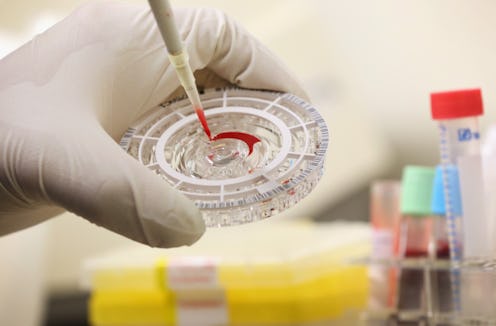News
The CDC Made a Frightening Mistake With Ebola
If there's one thing the Centers for Disease Control (CDC) has gotten pretty familiar with this year, it's the highly lethal Ebola virus. It's been tearing throughout portions of West Africa for basically the entire year, reaping a death toll of over 7,500, and it['s brief incursion onto U.S. soil provoked a fair amount of worry, and a lot of coverage. But now, after Ebola had successfully been eliminated from America, it seems as though the CDC itself may have opened up the risk for its return — the CDC may have exposed Ebola to their lab workers, in what would stand as a major safety failing, whether or not anyone actually gets sick.
It all happened at a CDC lab in Atlanta, where a sample of the virus was undergoing testing. The push to discover a reliable vaccine to immunize against Ebola has spurred an increase in its testing and research, with the hopes that a new discovery could ease the dire conditions in Guinea, Liberia and Sierra Leone in particular. Throughout this outbreak has been killing sufferers at a rate from about 50 percent to 70 percent, depending on whether your source the CDC's or the World Health Organization's numbers, respectively. In other words, the work that the scientists and technicians have been doing on Ebola is vital, and they're owed the utmost in safety protocols and protection.
But sadly, it sounds like those standards weren't met. Here's what happened, in simple terms: Somebody at the lab inadvertently transported a sample that may have contained Ebola from a high-security laboratory environment into a lesser one, missing the risk entirely. The person who transported it, as well as the technician who received it in the lower-level lab, should have realized the threat thanks to the color-coded label on the sample, but both reportedly failed to notice, according to the Washington Post.
The result is that the second technician may have been exposed to the virus, so he's been placing under a 21-day observation period. There are reportedly less than a dozen more people who're being assessed for exposure, and despite the fact that the number might sound concerning, that's actually a good thing. It's important to nail down everyone who might potentially have made contact with the sample, or with the people who handled it. While Ebola requires direct contact with infected bodily fluids to transmit from one person to another, the peril of its mishandling in clinical settings have been demonstrated within the U.S. — nurses Nina Pham and Amber Vinson were both infected while caring for dying Ebola victim Thomas Eric Duncan in Texas in early October.
It's unclear for now if anyone will actually suffer as a result of this mistake — nobody's shown any symptoms of the virus yet, and it's entirely possible nobody will. In any event, though, it won't be a fond memory for those in charge. CDC Director Tom Frieden expressed his concerns over the snafu in a statement.
I am troubled by this incident in our Ebola research laboratory in Atlanta. We are monitoring the health of one technician who could possibly have been exposed and I have directed that there be a full review of every aspect of the incident and that CDC take all necessary measures. Thousands of laboratory scientists in more than 150 labs throughout CDC have taken extraordinary steps in recent months to improve safety. No risk to staff is acceptable, and our efforts to improve lab safety are essential — the safety of our employees is our highest priority.
Images: Getty Images (2)
